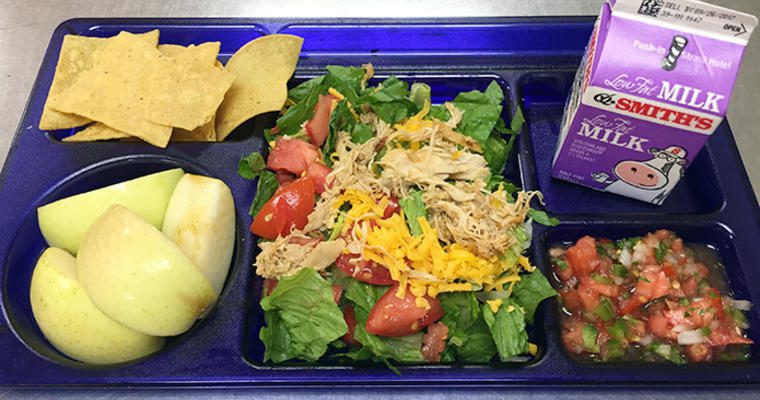Farm-to-table and eating local are not just for restaurants. In Central Ohio, school districts are getting in on the act with Ohio Days—a program that fills lunch plates with Ohio food once a month, teaching students about food sourcing and sustainability.
Once a month at Bexley City Schools and neighboring Columbus City Schools, the foodservice programs prepare a meal in which everything is sourced from Ohio farmers or suppliers. It’s a plan that grew from a desire to show students the connection between the food they eat and the people who grow, manufacture, sell and bring it to their schools.
Simple idea, big challenge
Feeding thousands of students every day is giant feat to start with. Sourcing all that food locally complicates matters. “The milk is easy, because there’s always been a local dairy or milk product from Ohio,” says Bexley Foodservice Director Julianna Carvi.
For other meal items, she had to establish some definitions. For practical reasons, a purposefully loose definition was adopted: items grown, raised or processed in Ohio. This allows products from outside the state that are processed in Ohio to count toward the program.
Not only do food items have to meet the “local” definition, they also must fall within school lunch requirements. There must be a fruit, a vegetable, milk, a grain that’s whole-grain rich, and a meat/meat alternate.
“One of our first meals was a chicken taco salad, using tortillas from a Columbus manufacturer, chicken from a Fremont, Ohio farm, cheese from a nearby dairy and vegetables from Granville, Ohio.
Getting help from NearBuy
To make the sourcing easier, Carvi calls on the Gordon Food Service NearBuy program. It provides a list of suppliers, manufacturers and growers by state so people creating meals know which products meet the criteria for local.
“There was a cheese calzone we got last year from a manufacturer in Sidney, Ohio, and I wouldn’t have known about them without the NearBuy report,” Carvi says. “I could go through it line-by-line and find things that fit as local products.”
And the reward has been tapping into a “local is better” feeling. Carvi says older students think it’s cool to eat local, the teaching staff is on board, and her kitchen staff likes the creativity involved. In October, her team prepared roasted butternut squash. And while peeling and cutting the squash was a chore, they landed on a pleasant surprise. “We ran out of our Garlic Parmesan Roasted Butternut Squash,” Carvi recalls. “The kids were coming back and saying, ‘This has to be on the regular menu, please make it again.’”
Finding a path to success
Success wouldn’t have been possible without a lot of support from Carvi’s district and others. She credits Joe Brown, Director of Foodservice at Columbus City Schools, for starting a local program for his district’s 50,000 students. “We’ll take credit for starting Ohio Days here locally, but we didn’t create the idea–we stole it from other places already doing it.”
Brown’s brainchild was picked up by Bexley and Upper Arlington City Schools. It also gets educational support from Franklin County Public Health. For example, if an Ohio Days menu includes apples, they supply a packet with apple facts, nutrition information and even stickers for teachers to use in classrooms and build excitement.
“We’ve tried a lot of different things, but Ohio Days is the first one that everyone fully supported and wanted to help succeed,” Brown says. “It’s good for the students, good for the community, good for the district—there’s really no downside.”
Learning the best way to start
Over time, patterns emerge and it’s clear what foods will work. Choosing a local food just because it’s local can be a mistake. “Sauerkraut may be locally available, but if kids won’t eat it, it’s not food … it’s waste.”
Although the program is still in its early stages and Carvi admits she’s still learning, her advice to other foodservice directors is to start small. “If you can’t commit to one day a month, start slower,” she says. “Maybe one day a year or one day a semester. You could even commit to changing one item to a local product and adding others later.”




























